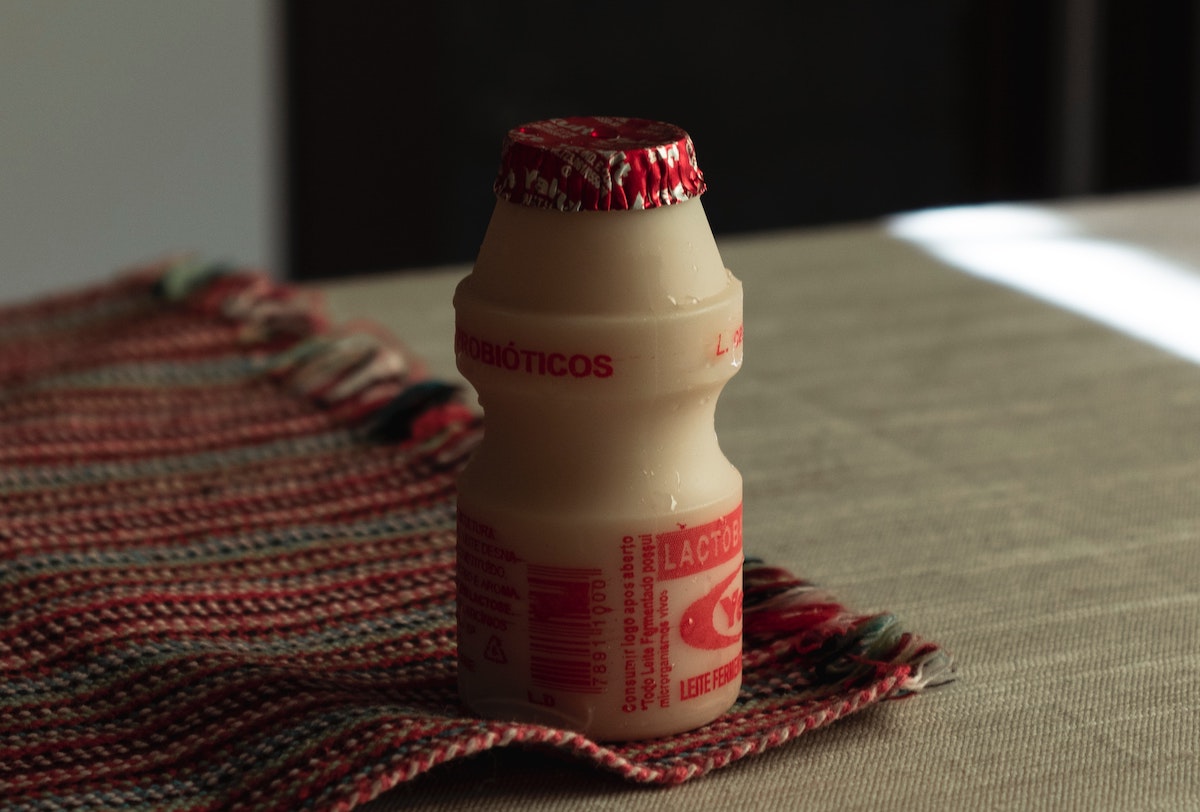Top image: Gabriel Yuji / Unsplash
As a child, I found it difficult to tell the difference between Singapore’s two main cultured milk brands: Vitagen and Yakult. To an untrained eye, the bottles looked the same.
It didn’t help that I never bothered to read what was on the packaging. Cultured milk was simply cultured milk. I just drank whatever probiotic drink my parents bought for me.
The historic tiff between the two household names got into the spotlight again after Vitagen’s marketing campaign was seen as punching down on its fellow competitor, Yakult. Vitagen’s marketing campaign centred around its Nutri-Grade rating.
The newly rolled-out initiative by the Health Promotion Board grades drinks based on their sugar and saturated fat content—a way to motivate companies to cut down on unhealthy bits. The label relies on a letter scale with ‘A’ being the best and ‘D’ being the worst. The better the Nutri-Grade rating, the better it’s supposed to be to reduce the risk of obesity and diabetes.
Vitagen’s Less Sugar drink received a ‘B’ rating. Yakult’s Regular Sugar drink, on the other hand, was stamped with a ‘D’ rating. And that ‘D’ rating comes at a cost.
Drinks with a ‘D’ rating cannot be advertised across all media platforms. It’s also compulsory for these drinks to have their ‘D’ rating displayed prominently on the bottle. The only promotion allowed for these drinks is ‘point-of-sales’ platforms like promotional displays at supermarkets and minimarts.
With a Nutri-Grade ‘B’ rating, Vitagen brandished it as a badge of honour, rubbing salt into Yakult’s wounds by taking a page out of the Mac vs PC marketing book.
Clever as Vitagen thought they were, they were probably not expecting such backlash. Yakult-loving Singaporeans took to social media to express their outrage over the marketing campaign. “Not sure which is more distasteful, your drink or your post,” reads one brutal comment.
A Nutri-Grade rating of ‘B’ might be better than a ‘D’—any Singaporean can tell you that. But what’s a ‘B’ grade if you’re being a D about it?
V for Vitagen, V for Vendetta
To be clear, Yakult isn’t exactly innocent. They’re guilty of taking digs at competitors too in the past.
But Vitagen’s dig is not a one-off incident; it’s an established pattern of behaviour. Yakult last found itself on the receiving end of Vitagen’s abrasive marketing tactics in 2017.
In Vitagen’s 2017 campaign, the cultured milk giant released a chart which compared its percentage of sugar content with its competitors. Competitors’ names were redacted but any Singaporean with spare time on their hands could have easily put two and two together.
That stunt, according to Marketing Interactive, caused some trouble between Vitagen and its competitors. It’s clear that Vitagen’s marketing team hasn’t learned their lesson—they have, in fact, returned with a vengeance.
Nutri-Grade ratings are a welcome move. But to weaponize a rating just to get a leg-up over competitors comes across as…desperate. Singaporeans can decide for themselves which one they like better, sugar levels be damned.
Even so, comparing the Nutri-Grade ratings between Vitagen Less Sugar and Yakult Regular Sugar seems a tad bit deceptive on Vitagen’s end. Wouldn’t a fairer comparison involve the ratings between the ‘Less Sugar’ versions of both brands?
Then there’s the whole vibe of being the teacher’s pet. “I’m better than you because I align closer to a national health campaign,” they might as well be saying.
Of course, marketing intends to sway consumers towards a certain action. And if the marketing campaign hits the wrong chord, the strategy ultimately backfires.
Cultured Milk’s Culture Wars
Health-oriented marketing is one thing, but taste is the ultimate determinant. A quick survey around the RICE office shows that 15 out of 16 respondents prefer the taste of Yakult to Vitagen. Some attribute the taste of Yakult to memories of their childhood. Others associate Yakult with cherished memories of their partying days.
“Even when used as a mixer, Yakult is superior,” one colleague retorts. “Have you heard of Vitagen soju? No, right? I rest my case,” she declares. Vitagen would probably not have an answer.
I, for one, would argue that people like Yakult because it just tastes better. And why does it taste better? Perhaps because it tastes sweeter. Another colleague quips that Vitagen tastes like plastic—I didn’t ask how he knew what plastic tastes like.
People’s tastes in milk products have matured anyway. Alternative milk, like oat, almond and soy, are on the rise and taking convenience stores by storm. The cultured milk industry is also getting more competitive—the likes of Betagen, Meiji, and Yoyi C, are creeping up on Vitagen and Yakult.
With so many competitors, both direct and indirect, the ad only comes across as targeted bullying, like picking off the easiest target in the room. Whether you’re comparing yourself with the whole market or with a direct competitor, throwing stones in glass houses is never a good idea.
There is a reason why Yakult has endeared itself to Singaporeans, and harping on a Nutri-Grade rating just seems like trying too hard. Would you stop buying bubble tea because it scores badly on a health scale? No, you wouldn’t; nobody puts Chi Cha San Chen in the corner.
And if Vitagen really wanted to pit itself against its direct competitor, there were definitely more tasteful ways it could have done so. Pepsi and Coke, for instance, play off each other’s advertisements in a tongue-in-cheek way.
Not to mention that the ad feels off-brand in the cultured milk industry—the same industry which prides itself on such positive, life-affirming values: Health, family, and leading a fulfilling and enriching life. With excellent digestive systems.
Less Sugar, More Bitter
Even if you’ve managed to strike that balance between tongue-in-cheek advertising with your competitors, it’s still a risky endeavour. Sometimes, it just doesn’t work out. Other times, it does.
It was six years between Vitagen’s first sugar-comparison marketing campaign and the recent Nutri-Grade one. Over the course of those six years, we survived a pandemic and teetered on the edge of a recession several times. We’ve got bigger things to worry about now.
Alas, not much has changed six years later. Brandishing the same marketing tactic, albeit delivered with a new Nutri-Grade advantage, comes across like an ex who just can’t keep your name out of their mouth.
Perhaps, the most interesting takeaway is the lesson the cultured milk giant’s target audience—young children and the young at heart—can learn: How to properly respond to a loudmouth. After all, if Yakult takes the high road and works on itself by cutting sugar and saturated fat content, Vitagen’s marketing campaign turns on itself and becomes free publicity for its most direct competitor.
And of course, it works for Vitagen too. If any publicity is good publicity, they surely have it now. When was the last time we even thought of drinking either drink? The fact that we’re even writing about this proves that their marketing works.
But sometimes, the best response is to say nothing at all. And Yakult is all the better for it. Until people start ordering Vitagen soju in bars, Yakult will always have the last laugh.







